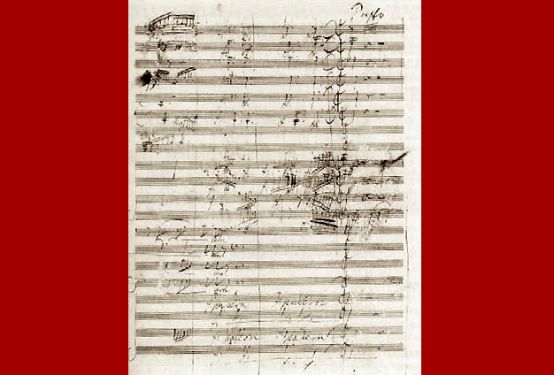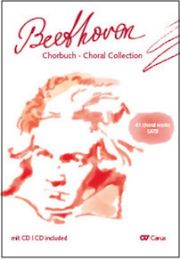Beethoven's choral music
Carus has published a "Chorbuch Beethoven", which combines original works, arrangements and new compositions; and Bärenreiter has brought out a new edition of the "Missa solemnis".

Unfortunately, Beethoven has a bad reputation when it comes to the singability of his works. Too high, too loud, too fast - these are common prejudices based on the fact that his choral symphonic works such as the 9th Symphony or the Missa solemnis place very high demands on the performers. However, one must also bear in mind that the extremely high registers do not represent a technical inability, but a deliberate compositional calculation that transcends boundaries. His Mass in C major op. 86, for example, is just as vocal as great masses by Haydn or Mozart. In terms of quantity, however, there is unfortunately very little choral music by Beethoven compared to the latter.
Carus-Verlag, in collaboration with the German Choral Association and Jan Schumacher as editor, has now published a new edition for the upcoming Beethoven anniversary in 2020 (250th anniversary of his birth). Choirbook Beethoven has been published. In addition to little-known early a cappella works and piano versions from his choral symphonic repertoire, it contains sacred and secular arrangements of Beethoven's music from three centuries. Among them are interesting arrangements by Beethoven's contemporaries, some curious arrangements by composers of our time (do you really need For Elise as an Alleluia choral piece?) and also new compositions commissioned by Carus such as a successful canon quodlibet by Gunnar Eriksson. All in all, this choir book is an interesting addition to the repertoire and a treasure trove.
Like Bach's Mass in B minor or Mozart's C minor Mass, which remained a fragment, Beethoven's Missa solemnis is one of the greatest sacred works of all time. It places very high demands on the performers, goes beyond the liturgical framework and can hardly be used for a church service. Some of the pioneering compositional ideas of the time include the vocally far-reaching, immeasurably escalating Gloria in excelsis Deothe unique Et incarnatus est with the solo flute breathing lifeblood, the mystical conclusion of the Et vitam venturi saeculi with the never-ending calls of Amen, the solo violin floating between heaven and earth Benedictus and the Agnus Dei, which depicts a war scene with the impressive solo timpani and sets Beethoven's express plea for "inner and outer peace" to music.
Bärenreiter Verlag has published the Missa solemnis in a highly recommended, exemplary edition. The new Urtext edition of the work takes all sources into account, including the old and new complete editions. The renowned Beethoven specialist Barry Cooper arrives at different readings in a number of places, for example in the Sanctuswhere the choir enters instead of the soloists and not only in the Pleni sunt coeli. Also worth mentioning is the inclusion of soloists in addition to the choir in most of the Credos. These facts and numerous editorial decisions are documented in the detailed Critical Report.
Beethoven-Chorbuch, 41 choral works SATB; choir director's volume with CD, CV 4.025, € 33.90; choir book, CV 4.025/05, € 12.80; Carus, Stuttgart 2019
Ludwig van Beethoven: Missa solemnis op. 123, edited by Barry Cooper; score, BA 9038, € 98.00; piano reduction, BA 9038-90, € 13.50; Bärenreiter, Kassel 2019









